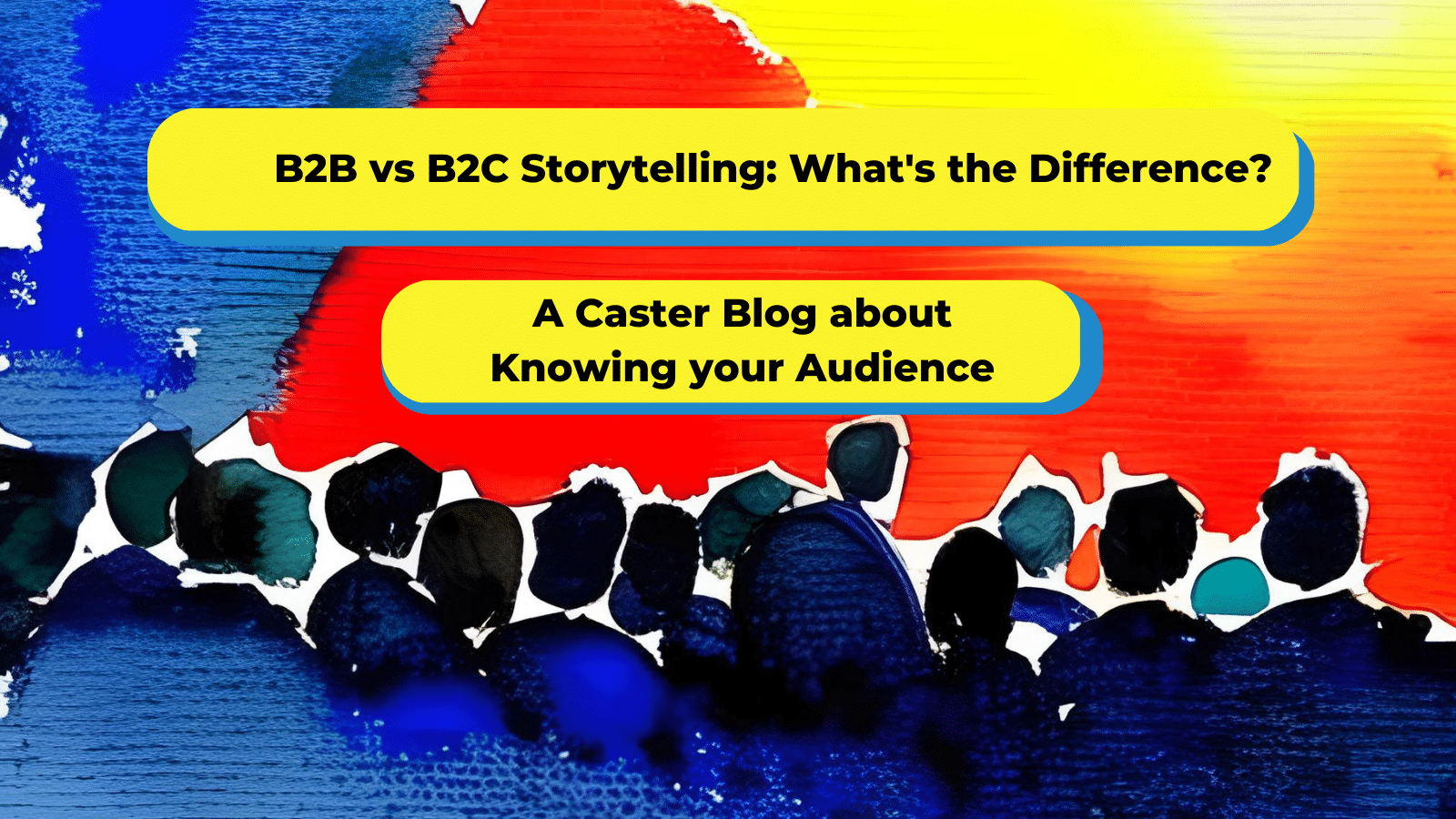 B2B vs B2C Storytelling
B2B vs B2C StorytellingB2B vs. B2C Storytelling: What’s the Difference?
When assessing each client’s particular audience, one of the first things we determine is who they sell to: are they B2B (business-to-business) or B2C (business-to-consumer)? B2B and B2C storytelling are remarkably different, so here’s a quick rundown of what you need to know to reach, engage with, and persuade these two distinct audiences effectively:
B2B Audiences are Knowledgeable, Data-Driven, and Focused on the Future
When storytelling for a B2B audience, you’re targeting a group of experienced, knowledgeable decision-makers within a specific industry. These folks are allergic to buzzwords and sweeping statements; they’re swayed by data-driven messaging that proves the value of a product or service to their business.
To best address a B2B audience, you really need to line up the facts. Support your statements with relevant, compelling – and ideally original – data. Be mindful however, that even within a B2B audience, levels of expertise (and interest) will vary. Always define technical terms and supplement your statistics with qualitative data: Anecdotes from recent relevant projects and quotes from partners or other customers are helpful insider context.
Reaching B2B pros requires meeting them where they are, which is often through trade publications that cover their specific niche. For instance, Caster client Crestron sells their comprehensive suite of workplace solutions to licensed technology dealers. The dealers use Crestron products to build solutions for customers in a wide range of vertical markets, from higher education, to corporate offices, to Formula 1 racing teams. We message both to Crestron’s customers – the dealers – and to their customers – the enterprise decision-makers. We maintain separate outreach strategies, media lists, and targeted messaging for each audience.
B2C Audiences are Emotional, Diverse, and Focused on the Present
In contrast to deep and narrow B2B messaging, B2C storytelling is designed for broad appeal. B2C messages should be suffused with personality, not statistics. Instead of turning to percentage points and graphs, use real-life examples to back up your claims. You can also write in a more casual, approachable tone: B2C storytelling should be relatable and easily understandable for a non-technical audience.
Reaching B2C audiences requires breaking through to consumer publications using tactics like new product spotlights and user reviews. Inclusion in product roundups and best-of lists is key to rising to the top of readers’ minds. You can also land mainstream media opportunities by capitalizing on current events, offering expert commentary from brand leaders. Practice soundbites and key messages for these interview opportunities. You may only get a single quote into the story, but a properly media-trained client can produce a charismatic moment in just a few words. These quotes, reviews, interviews, and product spotlights all work together to foster a positive and lasting association with the brand.
Conclusion
Ultimately, here’s what you need to know about B2B vs. B2C storytelling: figure out who your audience is first, and then craft your story around their needs, interests, time horizon, and expertise. If you’re interested in further messaging tips from the Caster crew, check us out on LinkedIn or drop us a line – we’re always interested in telling a good story!
